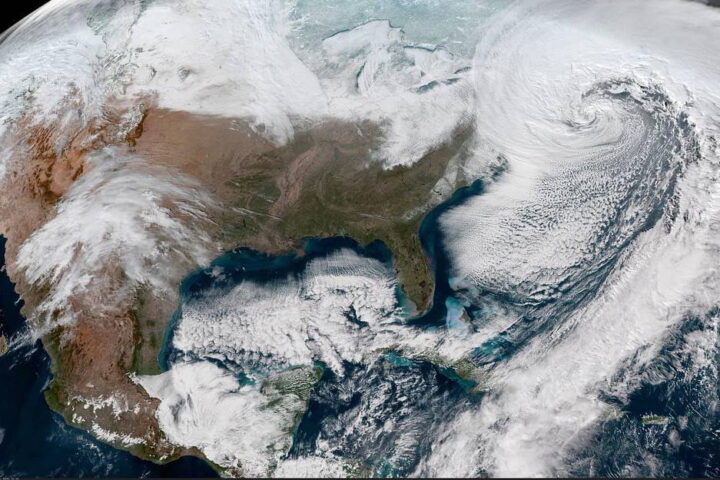Nor'easters är intensiva perioder med snö och kraftiga vindar som kan pågå i flera dagar. Termen förknippas oftast med kuststormar som passerar de större städerna i nordöstra USA, men den används även på andra håll, t.ex. i Europa.
En nordostlig storm är en storm med kraftiga nordostliga vindar. Termen "nor'easter" kommer från de vindar som följer med dessa stormar när de är som värst, även om vissa hävdar att det är ett litterärt verktyg för 1800-talets tidningsskribenter. I den nordvästra "kvadranten" av ett lågtryck blåser vindarna från nordost. Det mest intensiva vädret finns också i denna nordvästra kvadrant.
Nor’easters are most common in the fall and winter, although they can happen at any time of year. Depending on their severity, the Nationella vädertjänsten may issue a Varning för vinterstorm eller Varning för snöstorm för dem som befinner sig i dess väg.
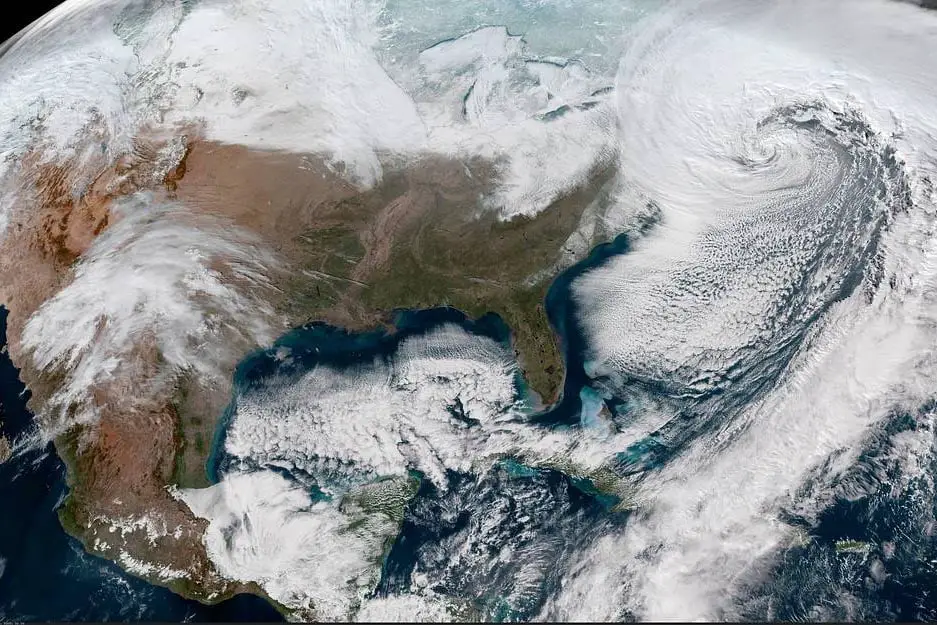
Vad är en nordostlig vind?
Nor'easters kommer från ett snabbt förstärkande lågtryck som rör sig norrut eller nordost längs Nordamerikas östkust under hösten eller vintern. De stannar antingen till havs under sin färd, rör sig längs kusten eller bara inåt land.
Ibland utvecklas nor'easters från tropiska cykloner som förlorar sina tropiska egenskaper: Orkan Sandy övergick till ett extratropiskt lågtryck strax innan han träffade New Jersey med vindar av orkanstyrka. Långt in i landet över västra Pennsylvania och Ohio Valley föll snö.
De flesta nordostvindar inträffar dock på vintern. Därför är kalla temperaturer, starka vindar och tung snö de vanligaste väderriskerna som de som befinner sig i vägen för en nordostlig storm kan behöva hantera.
Banan spelar en stor roll för vem som ser snö under vintertid nor'easters. I allmänhet kommer lågtrycket att befinna sig cirka 100 mil öster eller väster om USA:s östkust.
För betydande effekter i nordöstra USA och de medelatlantiska staterna är en nordostlig offshore-bana som passerar nära 40N latitud och 70W longitud den bästa banan, eller "benchmark", som meteorologer kallar det. Detta håller nordostvädret över Golfströmmen, en ström av varmt vatten som i stort sett löper parallellt med USA:s östkust.
Om den passerar västerut blir det vanligen mer regn än snö i storstäder som Washington, D.C., Philadelphia, New York och Boston. Om den passerar för långt österut är den kraftiga snön (om någon) begränsad till kustområdena.
Dessa stormar tenderar att ha kraftiga vindar som kan nå upp till 110 km/h (70 miles per hour), vilket skapar Blizzard Förhållanden i områden där snö faller och ibland allvarliga skador, t.ex. nedrivna elledningar. De orsakar också kustöversvämningar och mycket grov sjö samt allvarlig stranderosion. Kraftigt regn, åskväderoch till och med tornadoutbrott kan förekomma i stormens varma sektor (i sydost).
Var nordoststorm inträffar och hur de bildas
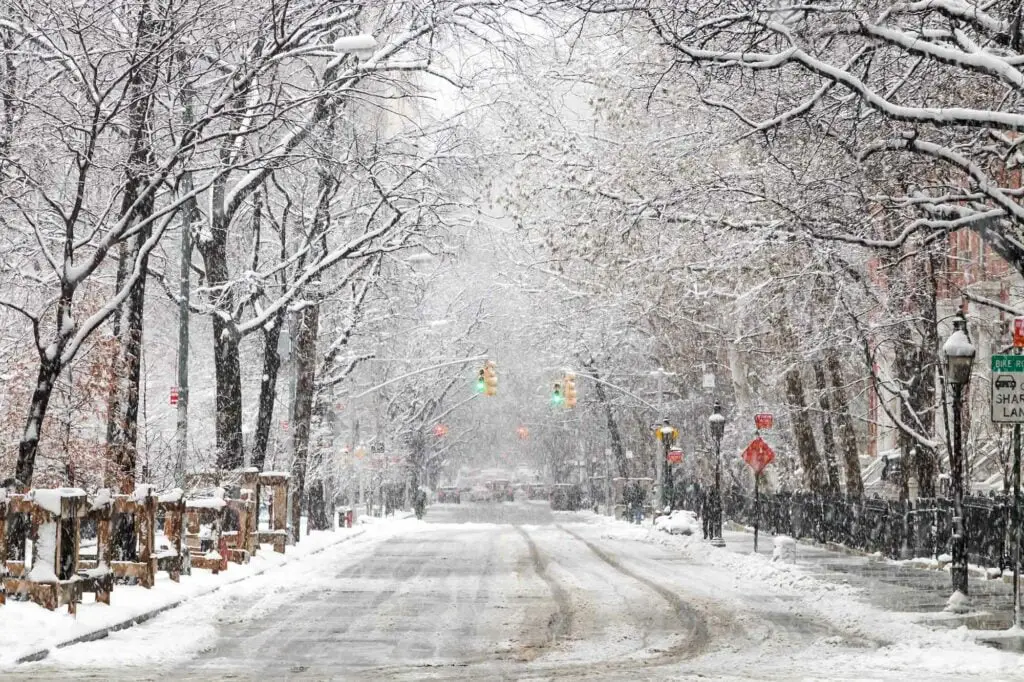
Nor'easters tenderar att bildas nära USA:s östkust och söderut. De förekommer även i Europa, men inte lika ofta.
De är mest sannolikt att inträffa mellan september och april - högsäsong är januari till mars på båda sidor av havet. I detta område, kall luft från Kanada krockar med varma Atlanten, vilket skapar en perfekt miljö för dessa stormar att bildas.
Det första steget är kollisionen mellan kall luft från Kanada och varmt vatten från Atlanten, vilket skapar ett lågtryck nära havsytan. Varm fuktig luft på höga nivåer rör sig sedan in i detta lågtryckssystem, vilket gör att det snabbt förstärks när mer fukt kommer in i atmosfären. Detta orsakar "cyklogenes", utvecklingen av ett lågtryckssystem med ett motursflöde runt dess centrum.
Anmärkningsvärda nordliga oväder
"Århundradets storm" 1993 var en av de dödligaste och mest destruktiva nordostvindarna som någonsin drabbat Nordamerika. Den dödade nästan 300 människor över hela Nordamerika, fällde upp till en meter snö på vissa platser och orsakade skador för $12 miljarder. I städer så långt söderut som i Georgia sattes snöfallsrekord för en enskild storm, och svåra väderförhållanden och tornador skakade om Florida.
Den Blizzard 1996 var en annan destruktiv nordostlig storm som drabbade östkusten i januari. Det föll mycket snö, över 100 personer skadades och skadorna uppgick till cirka $500 miljoner.
Den mest anmärkningsvärda nordöstra stormen är vinterstormen Jonas (2016-2017). Denna massiva storm orsakade snöstorm i nordöstra USA och sydöstra Kanada. Vinterstormen Jonas dödade 45 personer i sju delstater, gav upp till två meter snö på vissa platser och orsakade skador till ett värde av nästan $500 miljoner.
Längre tillbaka i tiden är Blizzard of 1888 förmodligen en av de mest kända nor'easters. Stormen lamslog östkusten från Chesapeake Bay norrut till den kanadensiska Atlanten, med så mycket som 58 tum (nästan sex fötter) snöfall i delar av New Jersey, New York, Massachusetts, Rhode Island och Connecticut.
Säkerhetstips för snöoväder
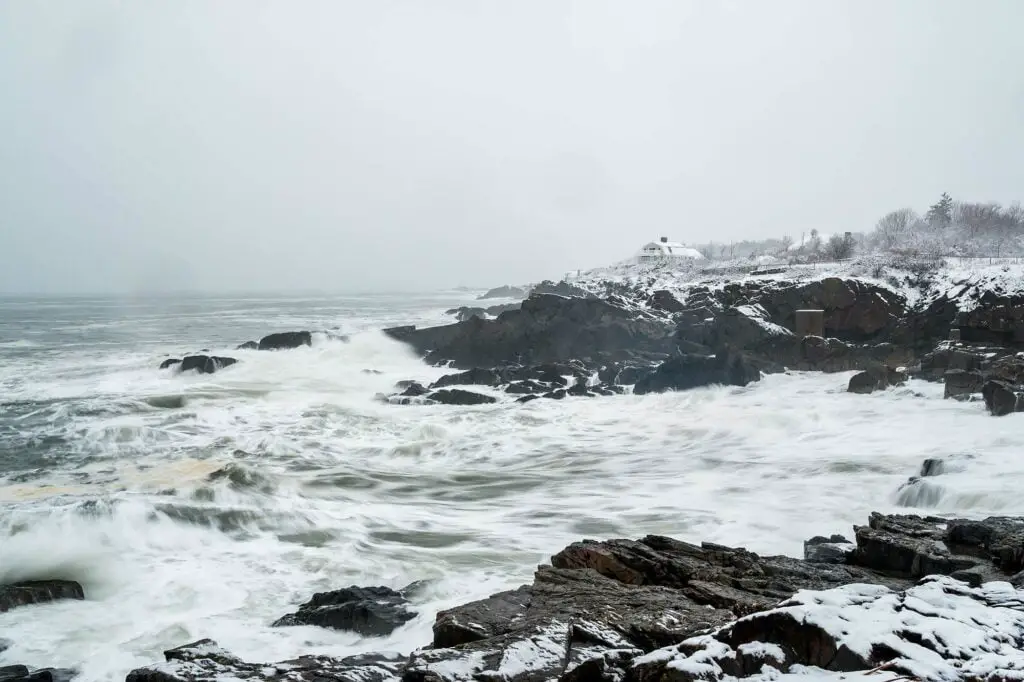
Oavsett om du är på väg ut för att trotsa elementen eller är fast hemma är det viktigt att veta hur du håller dig säker under snöstormar. Här är några tips på hur du håller dig varm och undviker potentiellt farliga situationer.
- Om du har bil ska du se till att bensintanken är full - på så sätt kan du ta dig till jobbet om vägarna blir för dåliga.
- Om du inte behöver gå ut, stanna inne - att hålla sig varm är det bästa sättet att undvika hypotermi och förfrysning.
- Packa en nödlåda i händelse av strömavbrott eller bilproblem - den bör innehålla livsmedel som inte går att fördärva, vattenflaskor, en ficklampa med extra batterier, förbandsmaterial och andra förnödenheter.
- Om du måste gå ut bör du ha flera lager kläder på dig - det är bättre att vara för hårt påklädd än för dåligt klädd när vindkylan är under noll.
- Undvik att gå på is om möjligt - inte nog med att du kan halka och ramla, vinterstövlar är dessutom designade för att vara moderna snarare än funktionella i isiga förhållanden.
- Undvik att köra på snötäckta vägar när det är möjligt - du ska bara köra om det är nödvändigt, och det är säkrare att stanna hemma än att riskera att krocka med en annan bil eller glida av vägen.
- Om strömmen går under en vinterstorm ska du stänga av alla apparater som kan orsaka en strömstöt när de slås på igen.
Vi rekommenderar att du köper en väderradio för att hålla dig uppdaterad om de senaste varningarna när en nordostlig storm hotar. Och nordöstra USA är inte det enda område som drabbas av kraftiga vinterstormar: vinterstormar och snöstormar är vanliga i stort sett överallt i USA där det snöar.
